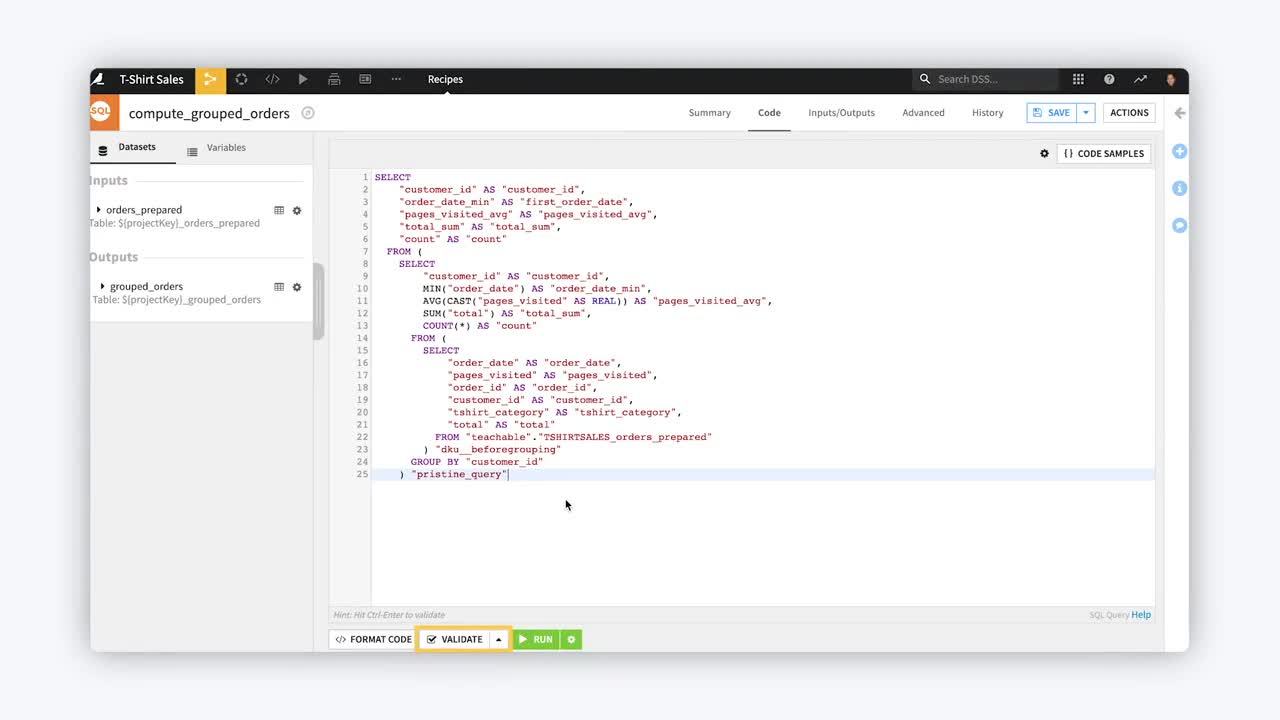Concept | SQL code recipes#
Watch the video

An SQL recipe is useful for maintaining legacy code in a Dataiku Flow or for executing complex transformations that can’t be done in a single visual recipe, all while using an underlying database execution engine.
You can execute SQL recipes in Dataiku in two different ways — either as a Query or as a Script. Here is a summary of the different features defining these two options.
SQL Query |
SQL Script |
|---|---|
Can write output to any kind of dataset |
Can only write to the database |
Runs 100% in-database when output is in database |
Always runs 100% in-database |
DSS handles table creation/drop |
You must handle table creation/drop |
Automatic code validation |
No code validation |
Support most SQL constructs |
Supports arbitrarily complex SQL scripts |
Does not support CTE (WITH) expressions |
Use for cases not covered by SQL query |
SQL query#
To create an SQL query, specify the input and output datasets, and the storage location for the output dataset. This storage location can use a different database connection than the connection used by the input dataset.

Creating the query recipe opens up a code editor that contains a SELECT statement which you can edit to build your query. You can then Validate your code to check for syntax errors.
Before running the query, note that Dataiku will use the primary or most encompassing SELECT statement to create and insert the query results into an output table.

When you Run the query, Dataiku writes this table into the storage location that you specified for the output dataset.
Dataiku handles the table creation or deletion, the insertion into the output table, and the automatic detection of the table schema. This means that an SQL query allows you to focus on writing the main query.
SQL script#
In the case of an SQL script, however, Dataiku doesn’t manage the input or output tables. This means that your code must include: DROP, CREATE, and INSERT statements, to ensure that your script is reproducible.
Furthermore, you must write the output of an SQL script to the same database where the input data resides.
Recommendation#
In general, try using the SQL query over the SQL script for the reasons just discussed. There are two exceptions to this recommendation:
When your SQL code has Common Table Expressions or
WITHstatements that can’t be re-written.When you are working with a data type that’s not natively supported by Dataiku.
Next steps#
You know how to leverage SQL in Dataiku. For developers, it is possible to go beyond this: for practical exercices see Leveraging SQL in Python & R or Performing SQL, Hive and Impala queries
See also
For more information, see SQL recipes in the reference documentation.

